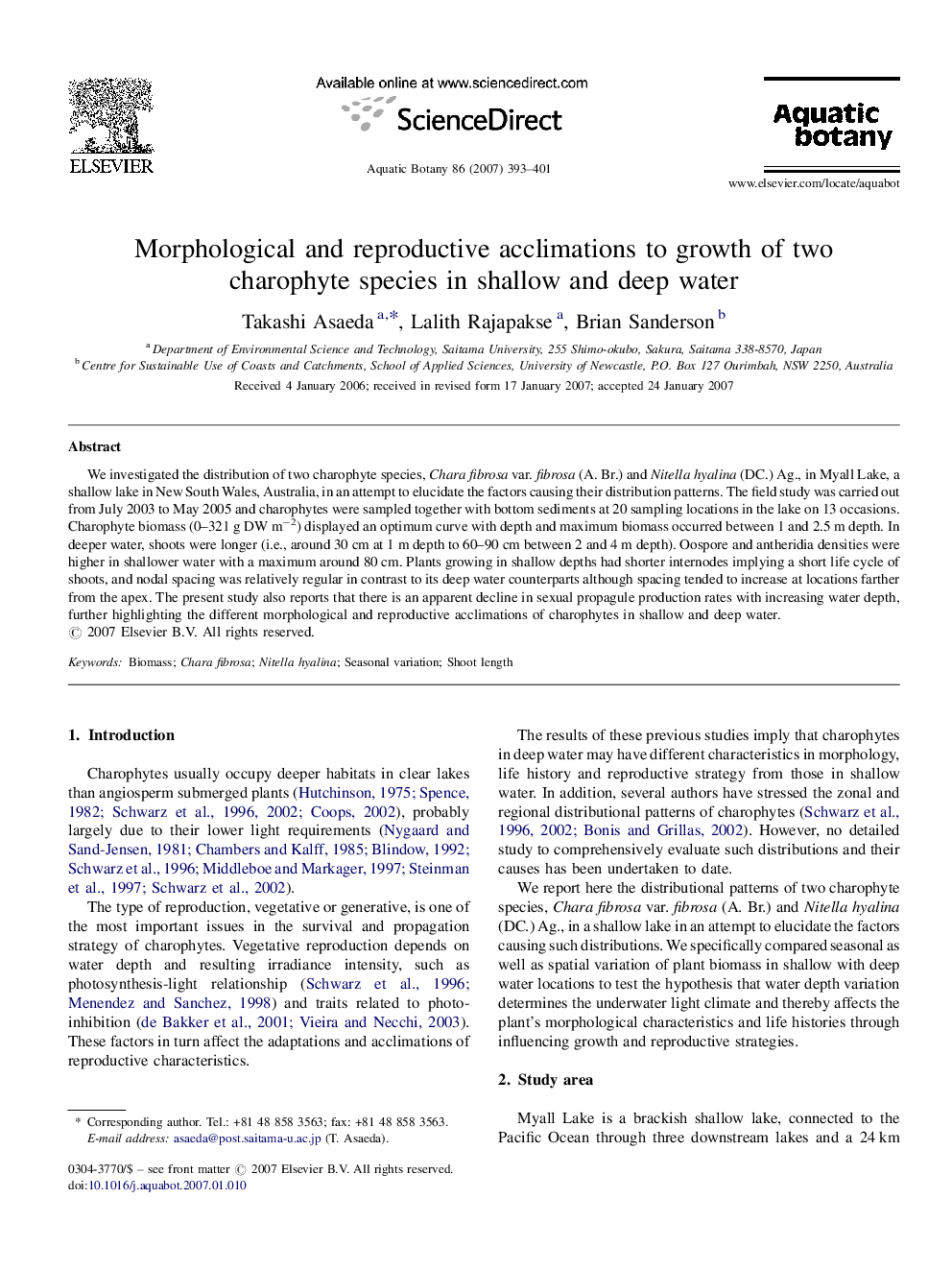| Article ID | Journal | Published Year | Pages | File Type |
|---|---|---|---|---|
| 4528454 | Aquatic Botany | 2007 | 9 Pages |
We investigated the distribution of two charophyte species, Chara fibrosa var. fibrosa (A. Br.) and Nitella hyalina (DC.) Ag., in Myall Lake, a shallow lake in New South Wales, Australia, in an attempt to elucidate the factors causing their distribution patterns. The field study was carried out from July 2003 to May 2005 and charophytes were sampled together with bottom sediments at 20 sampling locations in the lake on 13 occasions. Charophyte biomass (0–321 g DW m−2) displayed an optimum curve with depth and maximum biomass occurred between 1 and 2.5 m depth. In deeper water, shoots were longer (i.e., around 30 cm at 1 m depth to 60–90 cm between 2 and 4 m depth). Oospore and antheridia densities were higher in shallower water with a maximum around 80 cm. Plants growing in shallow depths had shorter internodes implying a short life cycle of shoots, and nodal spacing was relatively regular in contrast to its deep water counterparts although spacing tended to increase at locations farther from the apex. The present study also reports that there is an apparent decline in sexual propagule production rates with increasing water depth, further highlighting the different morphological and reproductive acclimations of charophytes in shallow and deep water.
